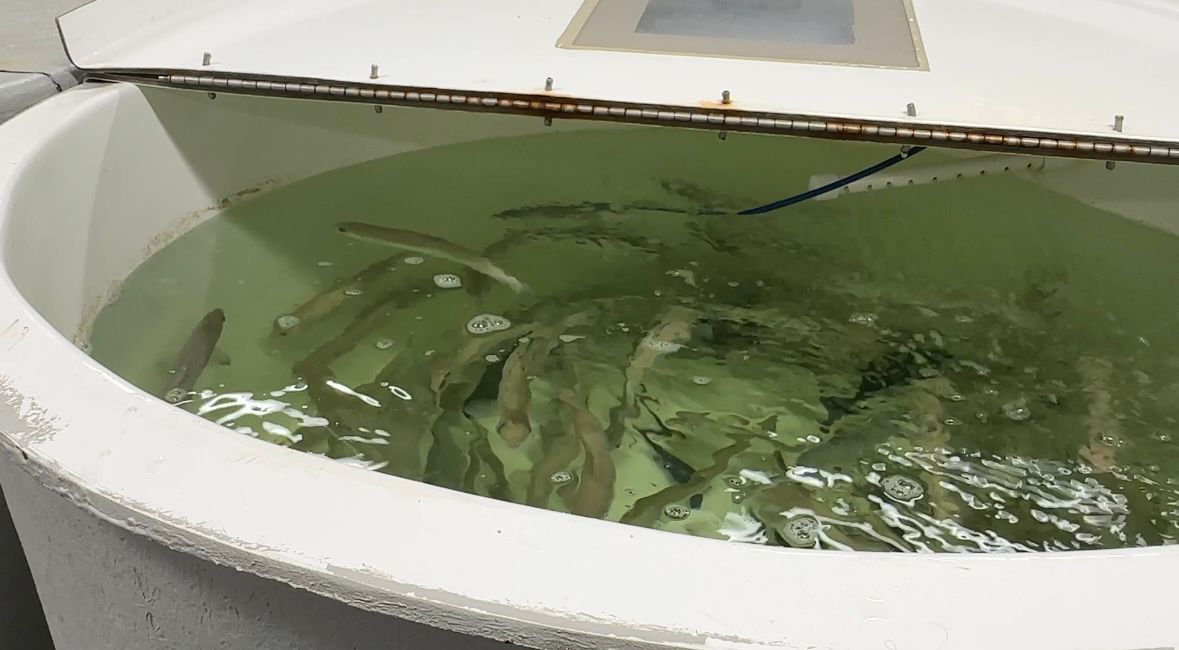Maine will need to expand its skilled workforce to meet the demands of an aquaculture industry that seeks to grow in the coming years.
To answer the call, the University of Maine is building a new state-of-the-art training center to ensure that the industry has the workers it needs to succeed in the future.
“With the growing industry in Maine, a lot of the industry has come and said we need people to work,” said Debbie Bouchard, director of the Aquaculture Research Institute. “Our objective is to create a workforce development that has hands-on systems that students can work on.”
The Sustainable Aquaculture Workforce Innovation Center will be built on the Orono campus thanks to about $10 million in federal and state funding.
Bouchard said the training will be in a setting that’s like what the students will see on the job, particularly companies looking to build recirculating aquaculture systems that grow fish on land in tanks.
There are currently four companies looking to open the land-based fish farms in Maine, with proposals in various stages of approvals in Jonesport, Belfast, Bucksport and Millinocket.
“We’re really targeting the new industry that Maine is attracting,” she said. “We do have four large commercial companies entering the state. They also reach out to us and say we need a workforce to put in these facilities.”
In addition, the university will continue research on new types of fish food and vaccines to ensure a healthy stock, she said.
Currently, the aquaculture sector employs more than 700 people and generates over $100 million in sales in Maine, according to the Maine Aquaculture Association. The group estimates that more than 1,300 additional employees will be needed in the sector over the next 15 years.
“Aquaculture is one the world’s fastest-growing production methods,” Sebastian Belle, aquaculture association executive director, said in a statement. “UMaine has played a critical role in supporting Maine’s aquaculture businesses, creating opportunities and competing globally.”
The new building, which is set to open in late 2025, will replace a building on campus torn down in 2022. A repurposed chicken barn, it outlived its useful life and opened the door for the new building, Bouchard said.
The university is in the final design phase for the 14,200-square-foot building. They are working to meet the needs of a global food supply that is increasingly turning to aquaculture — rather than wild caught seafood — to produce high-protein fish.
“Aquaculture is the fastest growing food production system globally,” she said. “It’s a very efficient way of producing protein.”
The U.S. imports about 80% of its seafood, primarily from Canada, Chile, India, Indonesia and Vietnam, according to the U.S. Department of Agriculture.
Bouchard said the downward trend of wild caught fish began in the 1980s, fueled largely by overfishing.
“More than 50% of all seafood eaten is produced by aquaculture,” she said.
As she looks toward the future of the industry in Maine, Bouchard said she’s excited to see aquaculture projects in the pipeline by Maine’s tribal communities including the Mi’kmaq, Passamaquoddy and Penobscot.
“In Maine we have a very diverse aquaculture industry, and we see the opportunities for growth,” she said. “That’s why our Aquaculture Research Institute is pushing for these innovative projects.”






